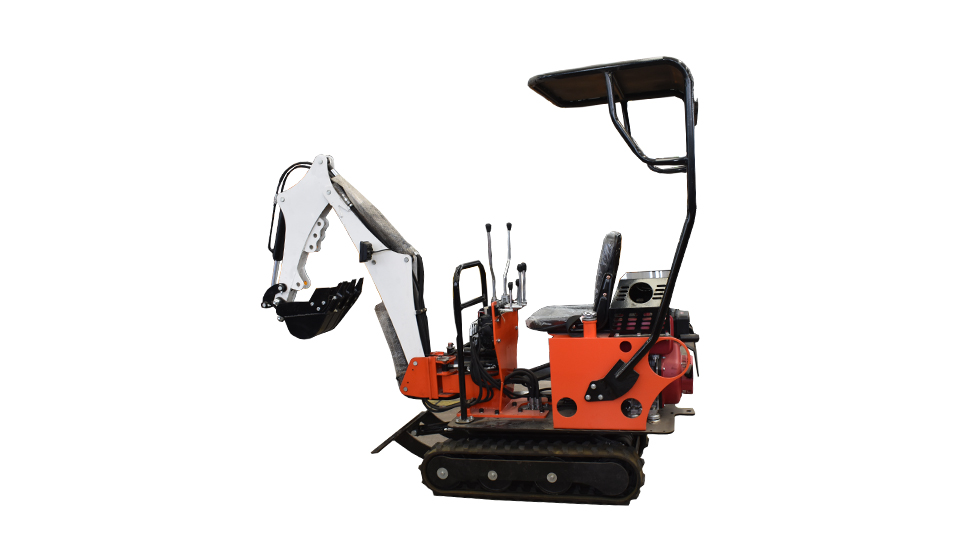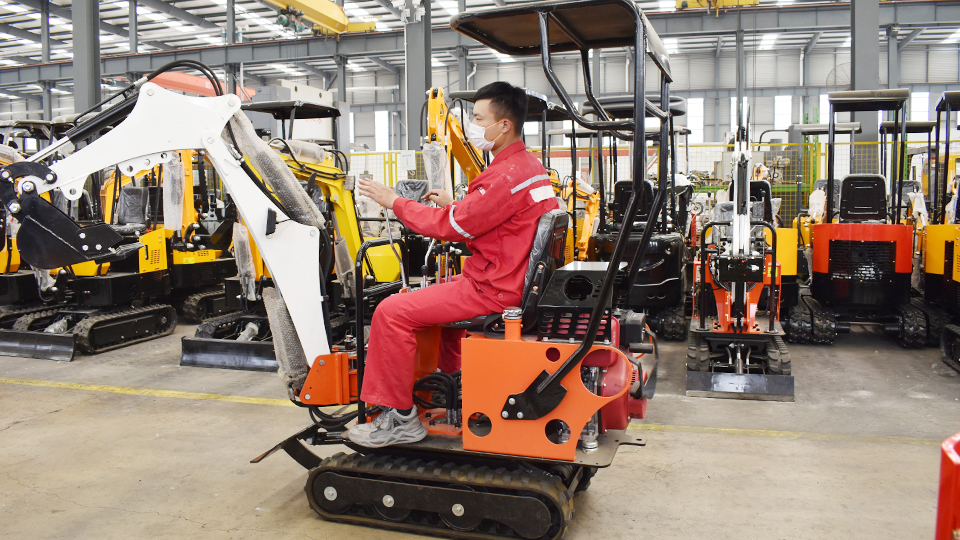The Trenching Bucket: An Overview
A trenching bucket is a type of digging bucket with a distinct design. Unlike the wider, more general-purpose digging buckets, a trenching bucket is narrow and has a flat, sharp blade and reinforced sides. Its primary function is to create deep, straight, and clean trenches for foundations, utilities, and pipelines. The bucket's design allows it to dig to a precise width and depth, which is crucial for meeting building regulations and avoiding unnecessary over-excavation.
Key Features:
Narrow Profile: The most defining feature is its narrow width, which is typically sized to match common foundation requirements (e.g., 24 inches or 600mm). This ensures you dig a trench of the exact dimensions needed, preventing both excessive digging and the need for re-work.
Sharp, Flat Blade: The cutting edge is often flat and has teeth, which enables it to slice through compacted soil and clay with minimal resistance. The flat bottom of the bucket ensures the trench base is level and uniform.
Reinforced Sides: The sides of the bucket are reinforced to handle the lateral pressure of digging in a confined space. This helps maintain the integrity of the trench walls and prevents the bucket from deforming under stress.

Why a Trenching Bucket is the Best Choice
While you could use a standard digging bucket for a foundation, a trenching bucket offers several key advantages that make it the superior choice for this specific job.
1. Precision and Efficiency
A trenching bucket is a tool of precision. When digging foundations, maintaining a consistent width and depth is critical. A standard bucket, which is wider and less specialized, can easily over-dig the trench, leading to several problems. Over-digging not only wastes time and fuel but also requires more material (like concrete or gravel) for backfill, increasing project costs. A trenching bucket is sized to the exact specifications, saving both time and money.
2. Time and Labor Savings
Using the right tool for the job significantly speeds up the process. A trenching bucket's design allows it to cut through the ground cleanly and efficiently. This reduces the number of passes required to achieve the desired trench, which in turn reduces machine run-time and operator fatigue. It also minimizes the amount of soil that needs to be moved and subsequently, the amount of backfill required.
3. Reduced Material Costs
As mentioned, over-digging a foundation trench means you'll need to pour more concrete to fill the extra space. This can lead to substantial, unforeseen costs on a large-scale project. By digging a trench to the exact required width with a trenching bucket, you ensure you're using only the necessary amount of concrete, keeping your project on budget.
4. Jobsite Regulations
Many building codes and regulations have specific requirements for foundation width and depth. Using a trenching bucket helps ensure compliance from the start, avoiding potential delays or fines from building inspectors. It guarantees that the foundation is being laid correctly and safely.
Other Attachments for Foundation Work
While the trenching bucket is the star of the show for digging the foundation itself, other attachments can be invaluable during the overall process. The best foundation work often requires a combination of tools.
1. Augers
For projects that require deep, cylindrical holes for pier foundations (e.g., for decks, columns, or smaller structures), an auger is the ideal attachment. Augers have a spiral drill bit that efficiently bores down into the ground, pulling the soil up and out of the hole. They are perfect for jobs that don't require a continuous trench but rather a series of deep, precise holes. They are much faster and more accurate than trying to dig a deep, narrow hole with a bucket.
2. General-Purpose (GP) Bucket
A general-purpose bucket is the most common attachment for an excavator. It's a versatile tool that can be used for a wide range of tasks, including digging, loading, and moving materials. While not the most efficient for trenching, a GP bucket is essential for the preliminary and final stages of foundation work, such as clearing the site, moving excavated soil, and backfilling the foundation once the concrete has been poured.
3. Ripper Tooth
When the ground is extremely hard, rocky, or frozen, a standard bucket may struggle to penetrate it. This is where a ripper tooth comes in. A ripper is a single, robust steel shank that attaches to the excavator arm. It is designed to apply a powerful, concentrated force to break up hard ground before the bucket is used for excavation. By first ripping the soil, you can make the subsequent digging with a trenching bucket much easier and faster, reducing wear and tear on both the bucket and the machine.

4. Grading Buckets
5. After the foundation has been poured and the trench has been backfilled, a grading bucket is used to finish the job. This wide, shallow bucket with a flat cutting edge is perfect for smoothing, leveling, and shaping the ground around the foundation. It ensures the site is left clean and properly graded for drainage, which is a critical final step in foundation construction.
The Complete Process: A Combination of Tools
The most effective way to dig and complete a foundation is to use a systematic approach with a variety of attachments.
Site Preparation: Start with a GP bucket to clear the job site of any debris, vegetation, and topsoil. This creates a clean workspace for the next steps.
Initial Digging: Use a ripper tooth if the soil is compacted, rocky, or frozen. This will break up the ground and make it ready for the next phase.
Trenching: Switch to the trenching bucket to dig the foundation trench itself. This is the most crucial step and where the trenching bucket's precision truly shines.
Material Handling: Use the GP bucket to move the excavated soil into a pile or load it onto a dump truck for removal.
Final Grading: After the concrete has cured and the backfill is complete, use a grading bucket to smooth and level the area around the foundation.
By selecting the right attachment for each specific task, a foundation can be dug and completed with maximum efficiency, precision, and cost-effectiveness. The trenching bucket, in particular, is an invaluable specialized tool that transforms a complex digging task into a streamlined process.
Post time:Sep-25-2020
